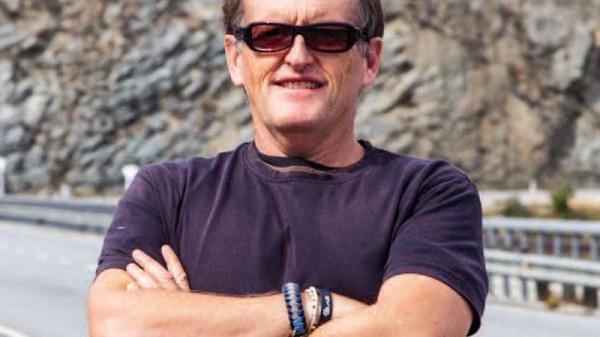
I understand we talk about the network regularly, but it is currently our greatest workplace safety crisis for which there appears little accountability.
Here are some of the things brough to my attention of late. A call last week telling me the left lane of SH1 Transmission Gully Northbound was glazed and melting in patches – in November. News on the radio reporting the next section of the Kapiti Expressway may not be open by Christmas on account of rework required – a stretch of road that hasn’t yet had a wheel on it. Driving on the Ohinewai section of the Waikato Expressway Southbound and hearing the car’s suspension and tyres deal with the washboard-like surface beneath it. The sham that is the SH2 Waihi to Tauranga ‘safety’ improvements – the time it’s taking, the surface, and configuration we’re being left with. The ever-increasing number of full closures to effect remedial work in the presence of no viable alternative route. I thought, if the government can pay rent to motels for the housing they can’t provide, maybe they can compensate carriers for the increased costs incurred where the ‘alternative’ exceeds an industry/regulator agreed distance? It seems too easy to effect a full shut. All you have to do is cite the ‘S’ word and everyone cowers in fear of being labelled uncaring.
Contemplating all this led my thoughts to the country’s present perfect storm, Marlborough Tasman.
Currently the Whangamoa section of SH6 is shut completely until mid-December. That’s the state highway linking parts of inland Marlborough, Tasman, Golden Bay, with the South Island’s upper East, and effectively the North Island.
Initially the alternative route was to be the SH63 Wairau Valley to St Arnaud, down a regional route known as the Korere Top House Road, utilising Stock Road, Wai-iti Valley Road and back out onto SH6 out at Belgrove South of Nelson, an extension of 48km over the norm. That in itself has significant time and cost implications for all operators. However, the Tasman District Council (TDC) was doing some of its own work on Stock Road and raised the prohibition flag. The next alternative was exiting Korere Top House Road onto SH6 at Korere itself – an addition of 50km over the norm. Although both options are sanctioned HPMV routes, the TDC raised the prohibition flag early on the second choice also, saying the road was not designed for that level of workload. As it turned out, neither were the locals.
That left the situation as it is, where trucks transit the Wairau Valley all the way through to SH6 at Kawatiri and then up to Nelson, a total detour of 81km one way. It appears consultation was not a strongpoint in the planning.
Then there’s the recent weekend closure for resealing of SH6 Whakatu Drive, the main artery from the ports in Nelson, South. The resultant gridlock on the Main Road Stoke alternative route was less than ideal, and again, there appeared to be little consultation with local carriers on subjects like ship discharge timetables. On that weekend there was a fertiliser boat in port that took an abnormally long time to discharge, with none of the associated additional cost borne by the planners of the road closer obviously. Locals we spoke to wondered why the whole road needed to be blocked rather than a lane at a time, spread over two weekends.
To Motueka just up the road. About a year ago the intersection of SH60 and King Edward Street at the Southern end of town had a roundabout installed. A good way to keep traffic flowing generally. What was interesting was the inclusion of four fancy pink pedestrian crossings on all the feeder roads, each within a few metres of the junction. It was impossible for any commercial vehicle of size – much less a 23m combination -– to park between a crossing and the round-about. Modern town planning at its absolute and consultative best. Not surprisingly, they’re being ripped up now and moved back … at your cost.
Then, our old friend, the Takaka Hill section of SH60 again. Night closures are now the standard procedure for most works.
Here’s a region utterly reliant on road, on the lead-up to Christmas, suffering immeasurably from a lack of planning and consultation. Yes, Nelson’s a hotspot, but the issue is not endemic.
I hear, and to some degree understand, there’s catch-up playing out for a lack of maintenance spend on the network in the early part of the last decade – it’s always ‘their’ fault. Likewise, the weather events raring their heads currently. But that doesn’t excuse the decisions being made today, about tomorrow. It’s too easy to close a road at the swipe of a pen and divert the economy’s bloodlines by hundreds of kilometres. Spending other people’s money is easy when any understanding of how hard it was to earn it is absent.
Yet for all this, there’s still one party who bears an equal if not greater responsibility for the network mayhem the industry is dealing with today, and that’s the industry itself. As Mike Williams says on his On the Roadpodcast, silence is consent.
I love a good truck show. Love them to bits. I’m looking forward to next weekend in Christchurch immeasurably. Friends, mates, trucks, and the ability to put our best foot forward in front of the people whose lives we facilitate. Letting them see us in our No.1s.
However, beyond the shopfront display the nation’s most critical workplace is wrecked – and hopelessly ill prepared for what’s coming to it over the horizon. Worse, it appears no one is shouting in a unified way that makes a disinterested administration sit up and listen. An administration that’s consistently under-resourcing a maligned and punch-drunk regulator.
All the best
Dave McCoid
Editorial Director
Read more
When opportunity presents
0 Comments4 Minutes
Roadworks positivity
0 Comments4 Minutes
What a show!
0 Comments4 Minutes
Speeding up … Again
1 Comment5 Minutes



